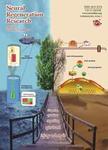Compound soft regenerated skull material for repairing dog skull defects using bone morphogenetic protein as an inductor and nanohydroxyapatite as a scaffold
Compound soft regenerated skull material for repairing dog skull defects using bone morphogenetic protein as an inductor and nanohydroxyapatite as a scaffold作者机构:Department of Neurosurgery Third Affiliated Hospital Sun Yat-sen University Guangzhou 510630 Guangdong Province China Laboratory of Artificial Heart First Affiliated Hospital Sun Yat-sen University Guangzhou 510630 Guangdong Province China Animal Room Third Affiliated Hospital Sun Yat-sen University Guangzhou 510630 Guangdong Province China
出 版 物:《Neural Regeneration Research》 (中国神经再生研究(英文版))
年 卷 期:2008年第3卷第8期
页 面:843-846页
核心收录:
学科分类:0710[理学-生物学] 1002[医学-临床医学] 1001[医学-基础医学(可授医学、理学学位)] 100101[医学-人体解剖与组织胚胎学] 10[医学]
基 金:the Science and Technology Foundation of Technology Department of Guangdong Province, No. 2007B031003001 the Science Research Foundation of Technology Bureau of Guangzhou City, No. 2006CBG0091
主 题:tissue engineering skull regeneration animal experiment
摘 要:BACKGROUND:In previous studies of skull defects and regeneration, bone morphogenetic protein as an inductor and nanohydroxyapatite as a scaffold have been cocultured with osteoblasts. OBJECTIVE: To verify the characteristics of the new skull regenerated material after compound soft regenerated skull material implantation. DESIGN, TIME AND SETTING: The self-control and inter-group control animal experiment was performed at the Sun Yat-sen University, China from February to July 2007. MATERIALS: Twenty-four healthy adult dogs of both genders weighing 15–20 kg were used in this study. Nanohydroxyapatite as a scaffold was cocultured with osteoblasts. Using demineralized canine bone matrix as a carrier, recombinant human bone morphogenetic protein-2 was employed to prepare compound soft regenerated skull material. Self-designed compound soft regenerated skull material was implanted in models of skull defects. METHODS: Animals were randomly assigned into two groups, Group A (n = 16) and Group B (n = 8). Bilateral 2.5-cm-diameter full-thickness parietal skull defects were made in all animals. In Group A, the right side was reconstructed with calcium alginate gel, osteoblasts, and nanometer bone meal composite; the left side was reconstructed with calcium alginate gel, osteoblasts, nanometer bone meal and recombinant human bone morphogenetic protein-2 composite. In Group B, the right side was kept as a simple skull defect, and the left side was reconstructed with calcium alginate gel, osteoblasts, nanometer bone meal and recombinant human bone morphogenetic protein-2 composite. MAIN OUTCOME MEASURES: Bone regeneration and histopathological changes at the site of the skull defect were observed with an optical microscope and a scanning electron microscope after surgery. The ability to form bone was measured by alizarin red S staining. In vitro cultured osteoblasts were observed for morphology. RESULTS: One month following surgery, newly formed bone trabeculae mostly covered t



